Over a year ago we were welcomed to the family (son) and the whimsical world that transpires within the Baker estate. I think it’s safe to say that everyone had a great time with RE7: Biohazard, whether they be a lifelong fan of the franchise, or newcomers who saw the potential for a really terrifying experience. The majority of the playerbase seemed to be giving rave reviews, and justifiably so, the game continues to be a top seller in the somewhat over-saturated genre of survival horror.
RE7 keeps you coming back for just one more playthrough, whether that be just to conquer the punishing madhouse difficulty or to unlock those last few pesky trophies which beckons speedruns and handicapped playthroughs. Each session elaborates on the tension that Capcom set out to achieve. Even if you know it’s coming, you’re still sprinting to those rooms for the sweet, satisfying sound of the safe room music.
In extremely belated celebration of the game’s first birthday, I decided to give the entirety of Biohazard a once-over and figure out what exactly developers should be taking note of for future horror titles.
Setting a tone
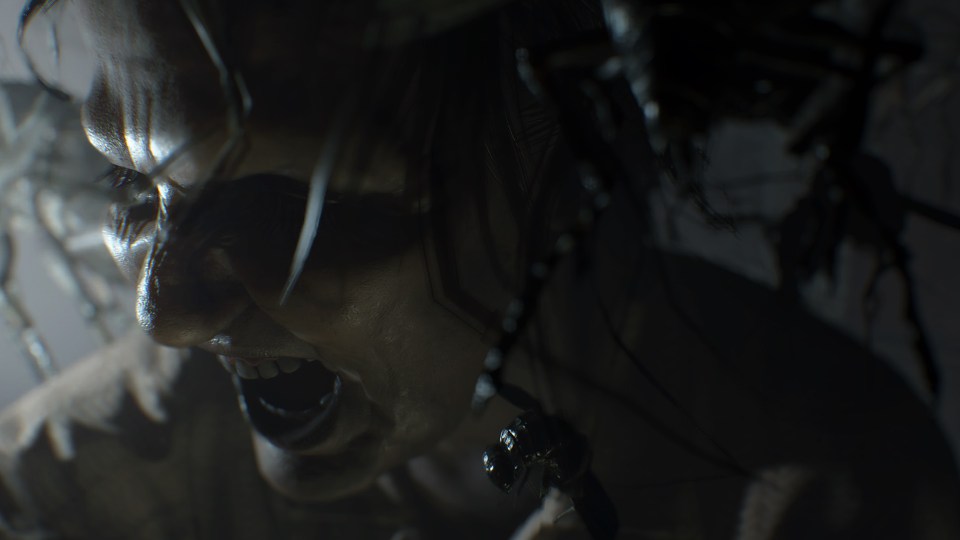
One thing I think everyone can agree on despite overall opinion on the game is that atmosphere is key to this game’s success. From the first minute of the campaign, the tone is set perfectly whilst you take a stroll through the Baker’s surrounding bayou. Louisiana makes an ideal setting for a Resident Evil game that tries to bring the series back down to earth, away from punching boulders and the like. So instead of creating horror through disgusting man-zombie hybrids, Capcom chose to focus more on the decadency of the environment, making the Baker estate come across as truly isolated.
The first act sees the protagonist Ethan sprawl his way through the guest house. You constantly feel like you’re under the surveillance of Jack and the family as the environment creaks away. I honestly felt like I was the one breaking into someone’s house. I personally think that the best examples of horror is when you linger on tension to the point where nothing actually happens. I’m not talking about those fake-out jump scares which gives you a moment to believe nothing’s there when in fact there actually is. Rather that you’re aware of the impending doom and you’re kept lingering on that for as long as possible. So knowing that as I creep about the guest house looking for Mia, Jack will eventually spin me around and punch me in the face makes the guest house one of the best half hours of modern gaming.
As the game progresses, it drifts further away from the initial tension that is forced upon you at the start of the game, which isn’t necessarily a bad thing seeing as Resident Evil games are known for having you running and gunning through whatever monsters are in your way. But in terms of making and leaving an impression on you, RE7 has it down from the opening act. Survival Horror should be built around helplessness and vulnerability. Even when you’re overpowered, that atmosphere lingers as you explore the various ends of the Baker estate.
A human approach to horror
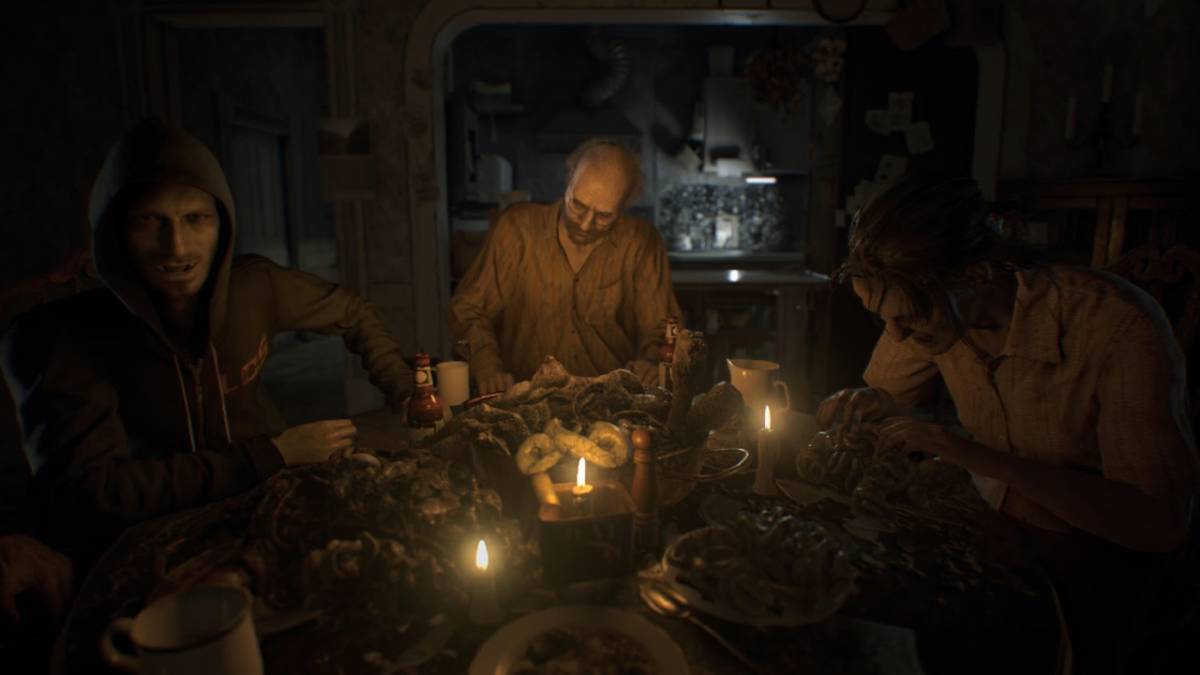
Resident Evil 7 draws upon various inspirations to make itself a homage to classic horror. Most obvious is the similarities between the Baker family and the deranged Sawyer family from Texas Chainsaw Massacre. Usually imitations tend to fall flat on themselves, but this managed to take what was genuinely frightening about the troupe of hillbillies sat around a dinner table and reinvented it to make you feel very intimidated. The issue with Resident Evil games of past was that there was never a constant antagonist that genuinely made you feel uneasy or threatened. Albert Wesker is the first that springs to mind when you think of RE villains, but he never really came across as scary in the same way that the Bakers do.
Wesker, Nemesis and Tyrant were the enemies which forced the franchise towards the guns and explosions, away from the freaky atmosphere and tension. Jack and the rest of the clan bring RE villainy back to what is truly intimidating… humans themselves. The fact that the Baker’s look, talk and interact like any of us would (aside from the maniacal tendencies and immortality parts), makes them seem more genuine of a threat. I’m on their territory, these people do indeed want to cause harm to me and they seem to be having a great time in the process. That’s scary.
Jack, Marguerite and Lucas all represent a different nature of horror – the invulnerable slasher, the deformed hybrid and the unhinged sociopath. Their characteristics play upon the very human fears that we all crave to see resonate within horror. Rather than becoming part of the majority of horror characters which become generic and forgettable, they are the most iconic part of the entire game and will probably go on to be some of the most beloved characters of the entire franchise.
Self-awareness
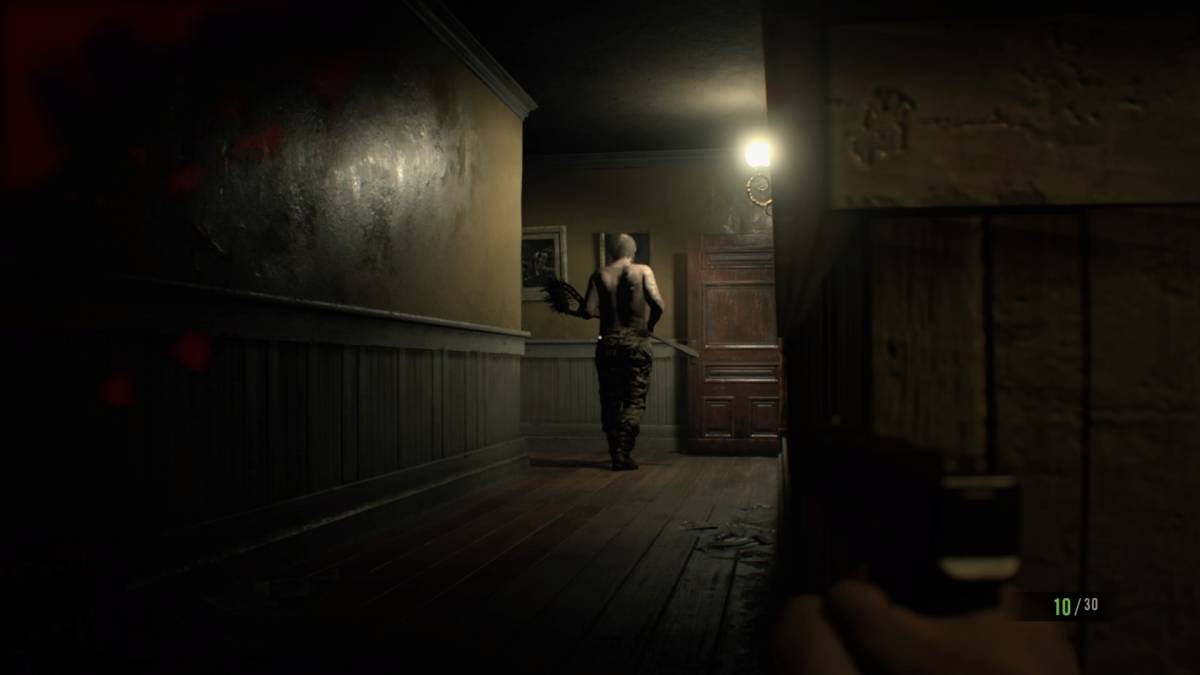
The game does a great job at keeping each of the family members fresh, playing on their characteristics to create a diverse range of ‘levels’ within the game. Capcom seemed to be quite aware of when a certain environment or method of gameplay was growing tedious and needed shaking up a bit, so you progress fairly quickly from the main house outwards, where you find new challenges themed around the different family members. Thematically producing each section of the game to reflect a more traditional aspect of Resident Evil made for a fresh, varied campaign. The main house focused more on stealth and puzzle solving, the old house brought in the typical RE monstrosities which are a little too cringe to explain to newcomers and Lucas’ den & beyond allow for a more combat heavy experience. It’s a nice progression from being totally powerless to somewhat of an equal to the hordes of molded and their creators.
Popular franchises such as Dead Space and The Evil Within eventually succumb to tediousness. Putting all your faith in one single environment and ‘type’ of horror can begin to grate on a game’s overall atmosphere. There’s only a certain amount of times you can be tricked with a jump scare before it becomes second nature. If a player gets used to enemy types and the pattern of narrative, then they won’t enjoy whatever horror a game has to its full extent. Resident Evil 7 at times fell into the same trap, the molded for example lost a lot of their novelty very quickly simply by being too repetitive.
Nevertheless, being aware of the pace of your game and knowing when is the best time to shake things up can go a long way in maintaining atmosphere.
Keep it simple
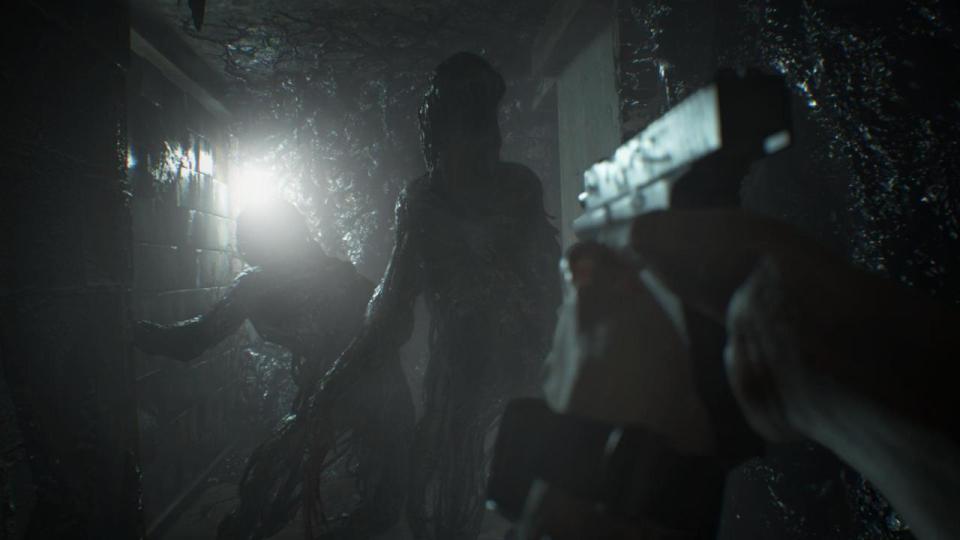
The game’s combat system doesn’t over-complicate itself. Coming off of Resident Evil 6, with its reliance on shooting galleries, RE7 really needed to tone down the action and go truly minimalist. Several survival horror titles have been effective by not even including weapons or combat – Outlast, for example, renders you totally powerless – but of course, Resident Evil wouldn’t be the same without at least one shotgun. Thankfully it doesn’t go full Michael Bay, but at times it was just a little immersion-breaking. I mean, I wasn’t expecting to find a fully-functional grenade launcher just hanging around in the Baker’s store room, let alone control a character with an expert knowledge in creating make-shift neuro rounds.
Corny action stuff aside, I really liked it. It called back to traditional techniques like ammo conservation and inventory management, again keeping you feeling like you’re only powerful for so long. Despite sometimes being a little overpowered on the lower difficulties, the molded and the boss battles can still be challenging enough. The UI is also subtle enough to not swamp (heh) the player and take away from the tension, not like the massive screen-hog in RE 5/6.
In terms of narrative, the game keeps the player on a very linear track without overloading you with side-missions or open-ended exploration. It’s a very simple of trope of escaping a haunted house and overcoming the puzzles and obstacles that you face along the way. Until the home-stretch, Capcom chose not to write a convoluted story about bio-weapons and global politics, which has tended to be the implicit focus of the franchise thus far. Again, it makes the story seem very human, despite the big goo monsters.
Specified DLC
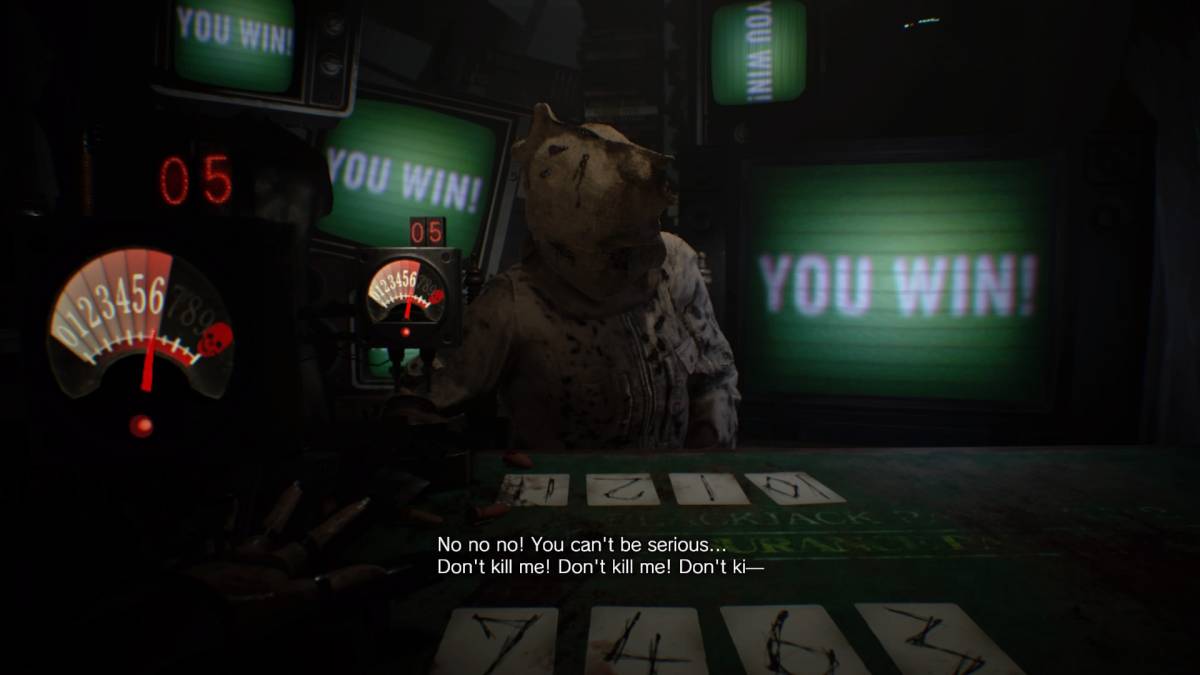
Capcom were very forward with their plans for upcoming DLC, at first pumping out smaller, isolated episodes of the wider lore. Some acted as a challenge mode for experienced players, almost a twist on the Zombie mode from the Call of Duty franchise, whereas others enhanced the story of the Baker’s – allowing you to play through their origins and other cookey antics. The family were obviously a huge hit, so getting to see more of their background unravel before us made their eventual circumstances appear a lot more sinister. They captured the different aspects of RE7 – suspense, stealth, combat and the characters themselves. A rare feat for video games, making shorter, valuable DLC that compliments the main game.
It added that extra layer of replayability, extending the game into new genres and taking advantage of certain ones that weren’t touched upon enough in the campaign. I personally enjoyed Daughters and Bedroom the most, as it brought you back to the roots of what made this game so great: tension within the Baker House. Putting you in the role of both Clancy Jarvis (the captured cameraman from the ghost house footage) and Zoe (The Baker’s daughter), the minute episodes provide slightly more context behind the in-game events and gives further tribute to classic horror.
Capitalise on surprise
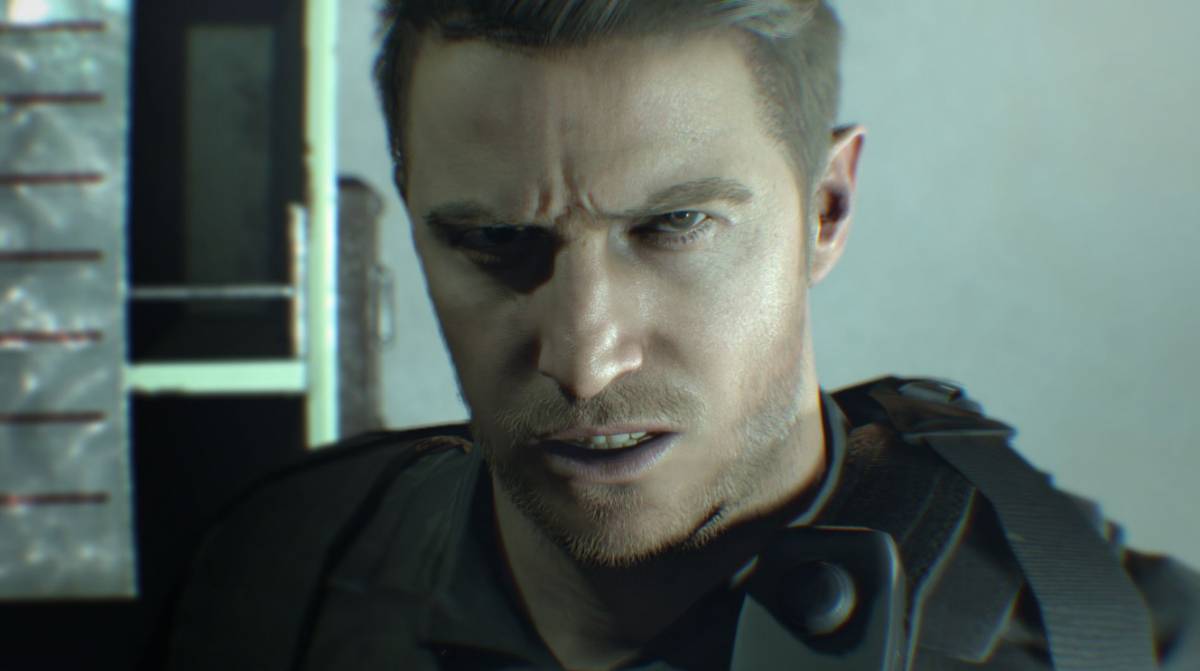
One thing that made RE7 so successful upon its release was the lack of content revealed prior. Aside from the occasional trailers and teasers, Capcom kept details pertaining to the story and the characters under huge, biohazardous wraps. I guess they learned from J.J Abrams and realised that if you want your product to be surrounded by hype, then you keep the audiences guessing until the last minute. Rumours and speculation were the talk of the RE community. Who is the mysterious protagonist? Are the Bakers part of some umbrella experiment? It was exciting times. The best fantasies of all were whether we’d see any special cameos from previous RE characters. Wesker? Leon? Or maybe even everyone’s favourite bane of boulder – Chris Redfield.
Just going to throw out a red warning light: SPOILERINOS LIE AHEAD!
The main campaign closes with the beaten carcass of Eveline lifeless behind a rather hunkish soldier. He removes his helmet to reveal an unfamiliar face, but speaks a very familiar name. Indeed, Chris Redfield made it into the game as part of Neo-Umbrella, a PMC agency founded from the remnants of that Umbrella corporation. Many were left bewildered as to whether or not it was the real Chris. He sure sounded like him, but it’s hard to justify such a jump in physical appearance after only last seeing him in the previous game. New year, New Chris aside, I was happy to hear he’d be getting his own DLC episode to pick up where Ethan left off.
Not A Hero was delayed quite frequently but eventually hit the stores late last year along with its twin DLC End of Zoe. The first cutscene literally starts with Ethan hopping on an Umbrella helicopter with Mia and flying away to safety, whilst Chris is still hanging around the Baker estate in search of Lucas. Lucas Baker was one of the more intriguing characters of RE7; file scavengers would have realised that Lucas was provided with a cure to the infection, rendering him free from Eveline’s control. Unfortunately, Lucas was a pretty messed up guy even before the infection, so his sociopathic nature was amplified after his parents started capturing passers-by against their will. This all made him a suitable rival for Chris heading into the DLC, after his fate following his conflict with Ethan remained ambiguous.
Chris’ DLC mission was extremely short, considering how long it was kept in development for. It was very linear and unoriginal, kind of a step back from everything that base RE7 achieved. It was certainly the lowest point of this game’s life so far, but remains a necessary addition to the story. It tied up a few loose ends left behind by Lucas’ story and gave loyal fans a fix with more established characters. The gameplay is what truly lets this DLC down. Transplanting a rather generic FPS into RE7, it felt out of place and unwelcome after the minimalist approach taken to combat in the main campaign. Perhaps I’m being slightly a little too harsh on Not a Hero, but there’s nothing remarkable about the 90 minutes you play as Chris, aside from more cracking voice acting and motion capture from Lucas.
So if you’re going to try to break the internet and please the fandom, then at least try and capitalise on it better than they did with Not a Hero.
Make up for it
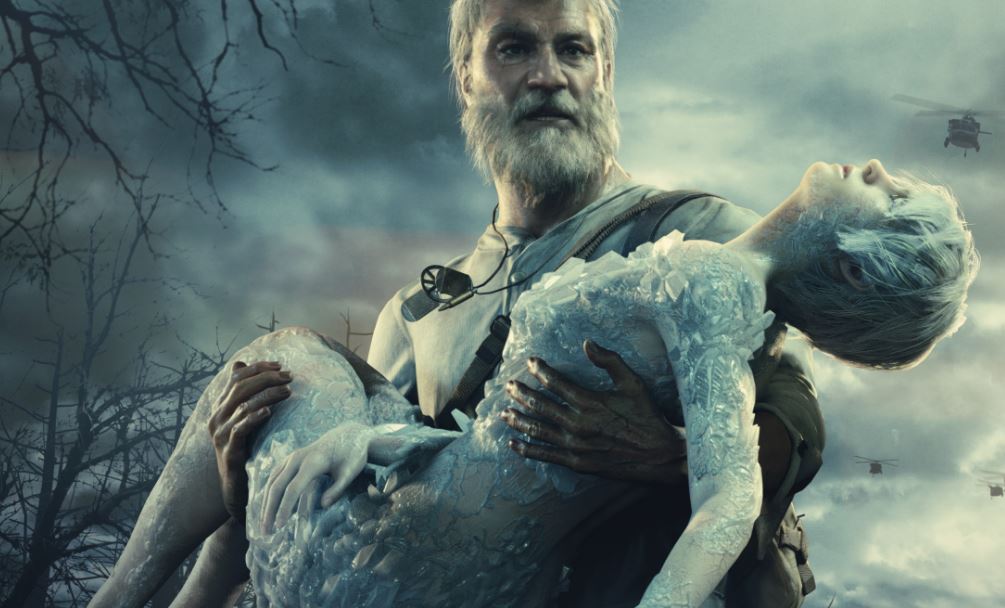
Luckily, End of Zoe was there to soften the blow of Chris’ debauchery. I think Capcom literally threw their hands up in the air and shouted “fuck it” when they had this idea pitched to them. The player takes control of Joe Baker, brother of Jack and uncle to Lucas and Zoe. Now Joe’s been living externally to all of this mayhem caused by the E-series and happens to stumble onto the estate at least a day or two after the events of the main game and Not a Hero. He finds Zoe Baker, who canonically wasn’t given the cure by Ethan during the main game, who has crystallised and succumbed to a state of paralysis. Uncle Joe takes it upon himself to fetch the necessary serum to bring her back to normality, with the help of some Umbrella operatives along the way.
What makes this DLC so special is the unwritten humour behind it all. The fact that you’ve gone from a totally helpless John Doe to a beefy Baker who can literally explode molded with a single left hook is somewhat poetic of the story of the franchise. Resident Evil has taken the age-old zombie from being a terrifying foe to something that you shrug off whilst you mow down hundreds of them with a chain gun. Joe Baker is the exact person you want to be in the middle of an epidemic: a family man who takes no shit from whatever biohazard happens to be lurking around the corner. His character is relatable yet eccentric.
Thankfully this DLC attempts to return to the tone set by the main campaign. Perhaps it’s not as effective in terms of creating an atmosphere, but it brings you back into the unique environment of the Baker house, now enveloped in Umbrella biohazard tents. It’s a really cool twist on what we’ve seen from the rest of the game, with the added silliness of a jacked-up dude duking it out with a swamp monster, who turns out to be a very familiar face.
End of Zoe could be seen as a continued drift away from what made the base game so damn good. But Resident Evil has always had a light-heartedness hidden beneath the gore and the scares. It eventually needs to be taken advantage of in the form of a hillbilly being gifted an Umbrella developed punching glove that allows you to send your foes flying through the air. It saved me from giving up on the future of this game and brought me back for one more run-through.
As someone who likes to dabble in all genres of gaming, I can either be easily impressed or turned away by survival horrors. RE7 rekindled my love for the genre in the triple A market, even just in those opening 10 minutes. It has managed to do what many other games fail at, bringing me back for another go. Current and future developers need to take heed of RE7 and use it as a template for what to do and what to avoid when making a game that champions suspense and atmosphere.
Some of the coverage you find on Cultured Vultures contains affiliate links, which provide us with small commissions based on purchases made from visiting our site.

